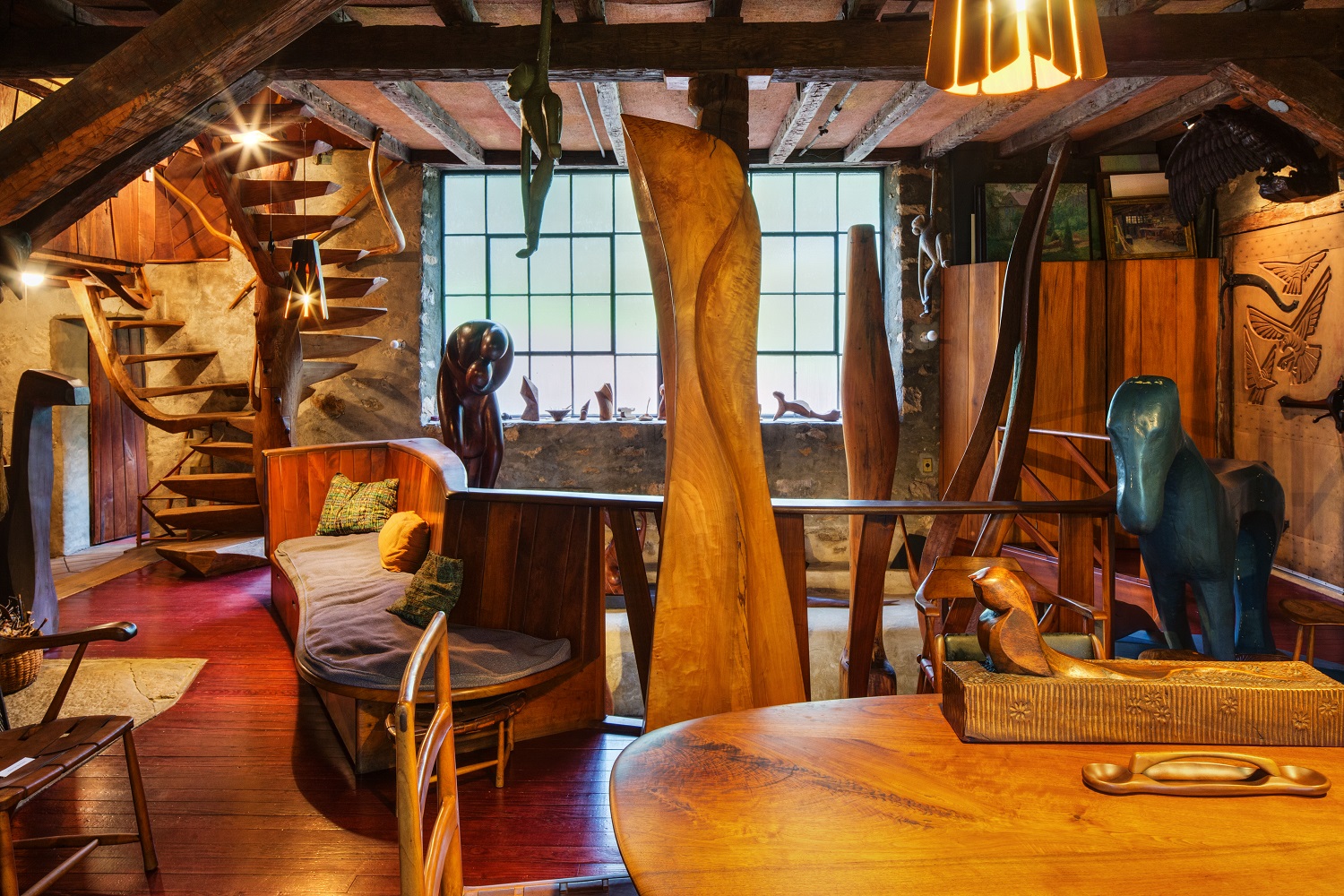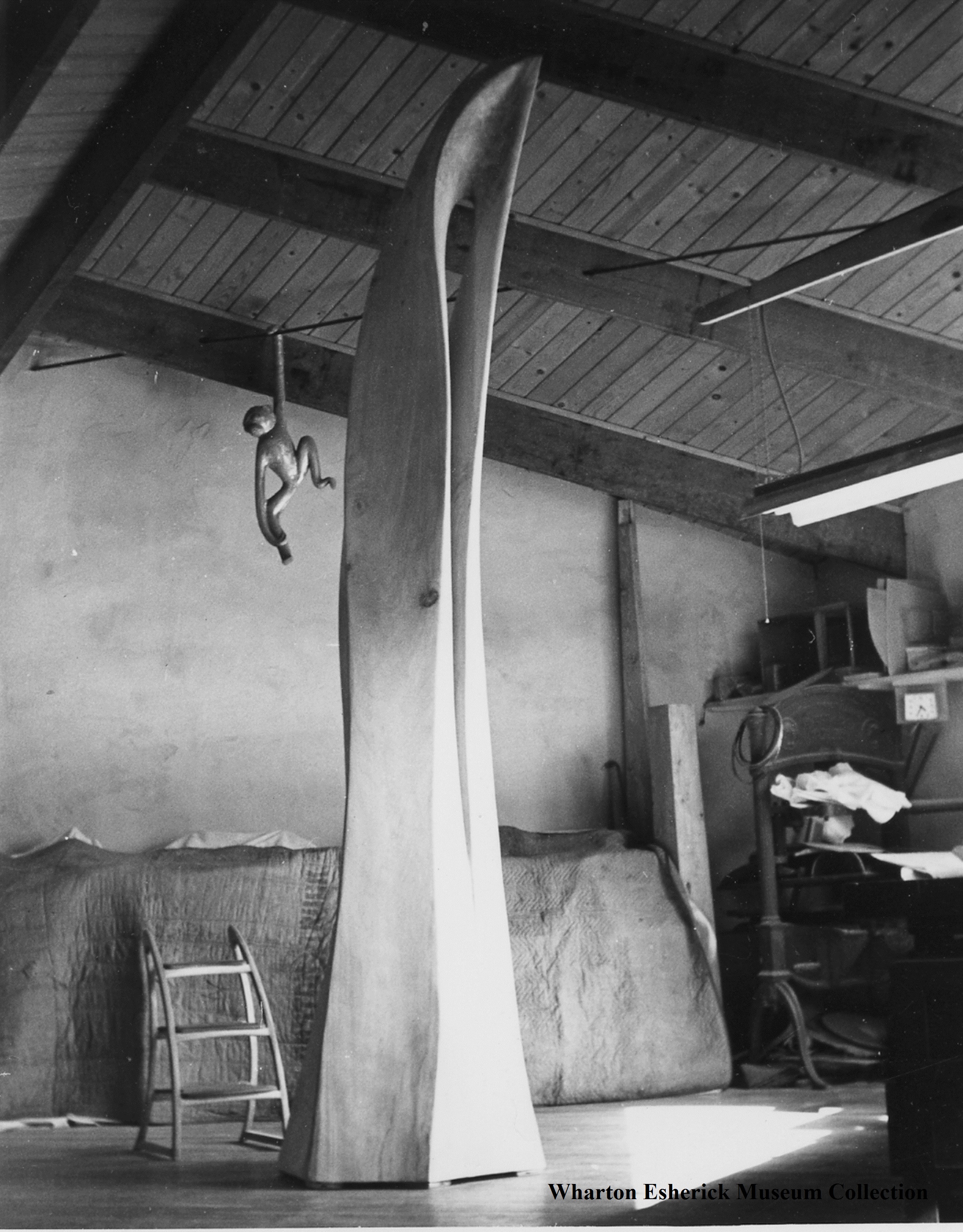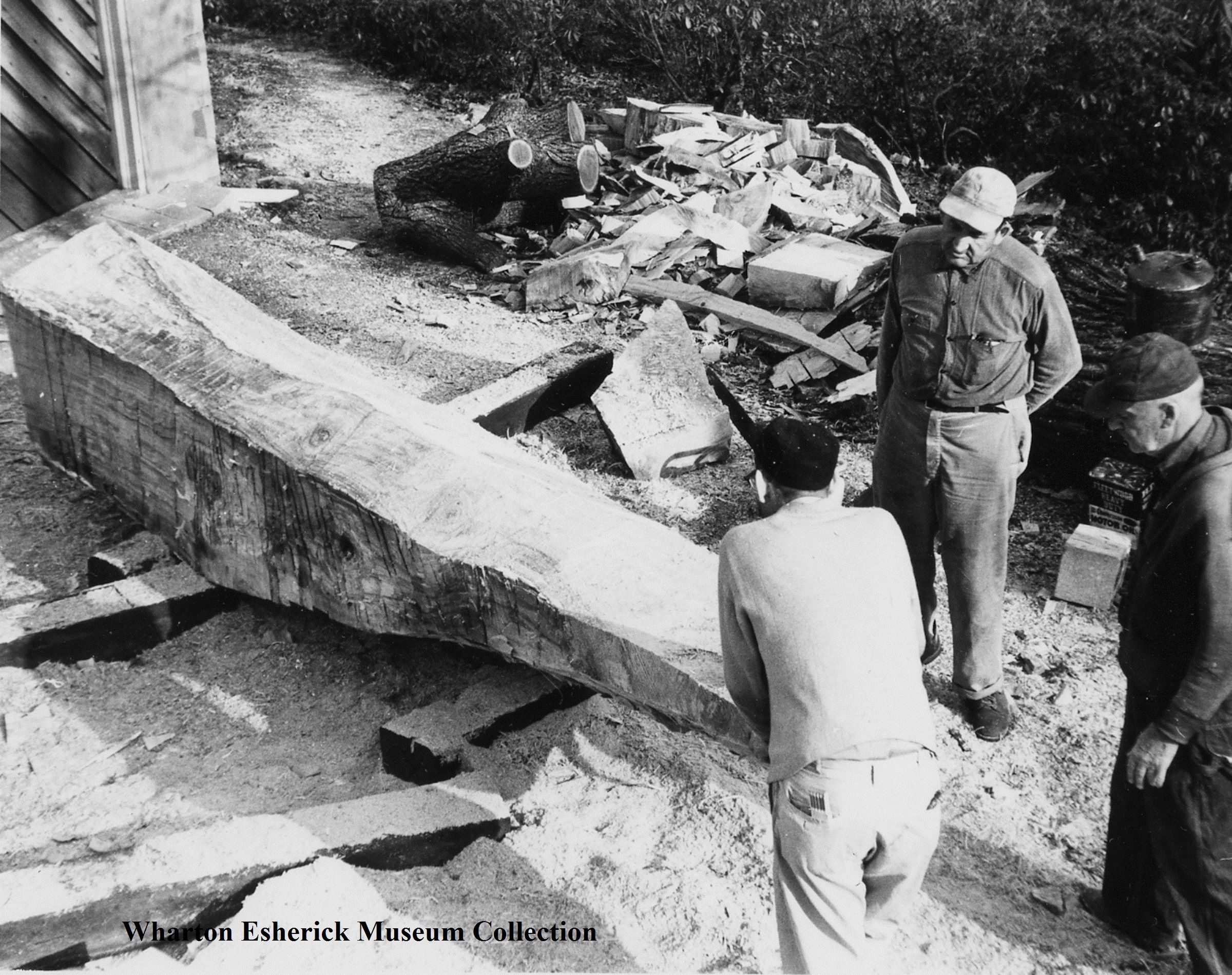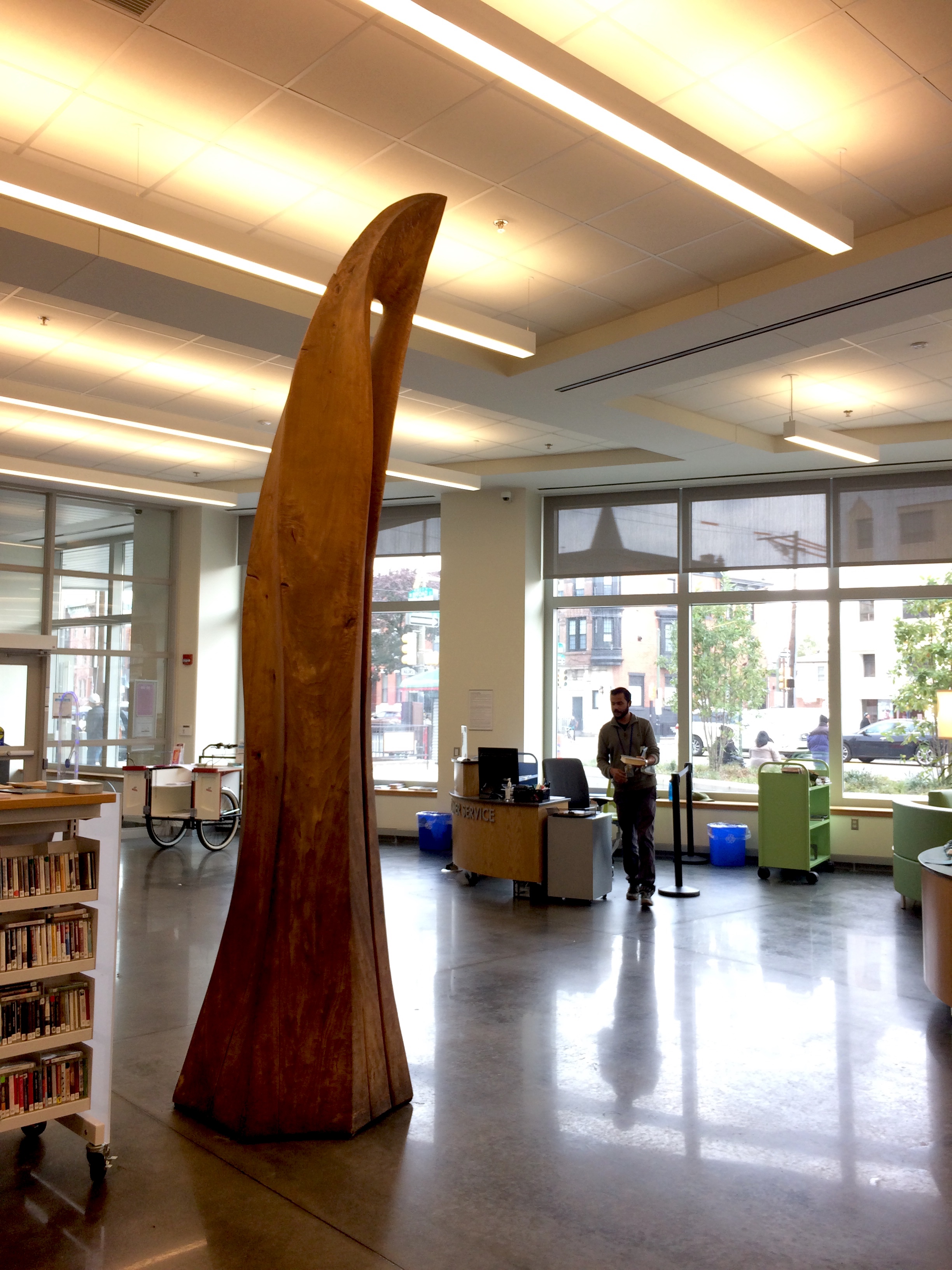
Rhythms II on display in the forest of Esherick sculptures that is the main gallery. Photo by Charles Uniatowski.
Among Wharton Esherick’s final sculptures is a pair of tall, graceful cottonwood forms known as Rhythms and Rhythms II. The latter we see here at the Museum all the time. Rhythms II stands near the center of the main gallery, its flowing curves enjoyed by many visitors over the years. The abstract form is open to interpretation (alluding to waves, water, boats, movement) though Wharton was likely inspired by the dancers that were such an important part of his life and career. Most visitors, in fact, may not realize there is a companion for this piece, Rhythms, which lives down at the South Philadelphia Free Library. Both Rhythms and Rhythms II were carved from the same large eastern cottonwood tree which was cut into two logs once it was felled by Ed Ray, Wharton’s dear friend and expert logger.
Made from the larger of the two logs, Rhythms was initiated thanks to Philadelphia’s Percent for Art Program. Established in 1959, the program requires a percentage of the cost of new buildings and development be allocated to install public art. In 1965, a percent for art meant a percent for Wharton! The new South Philadelphia Free Library board selected Wharton Esherick to create a large sculptural piece for the building’s atrium (despite the fact that when asked for at least a thumbnail sketch from the board, Wharton wryly submitting a very large sheet of paper with a sketch literally no larger than his thumbnail). The resulting piece was the over 13-foot tall cottonwood abstraction Rhythms.
By the mid-1960s, Wharton found he was a little too old to sculpt with an axe, which had always been his favorite. Instead, Wharton enlisted his two workers, Horace Hartshaw and Bill McIntyre, to help with Rhythms, carving away with chainsaws what Wharton delineated with his chalk. While his “thumbnail” joke could have ruffled a few feathers, Wharton knew the freedom his process required. He needed to be responsive to the wood and the grain, knowing his compositions could and would change as the piece came into being. Rhythms II changed as well. Initially conceived as a prismatic form, Wharton found the second log worked best with similar flowing curves.
In both sculptures Wharton captured the graceful movement of organic forms while leaving them open to interpretation, sparking the imaginations of Museum guests and library goers alike – as with one child who thought Rhythms just had to be a dinosaur’s toenail!
Post written by Visitor Experience and Program Specialist, Katie Wynne.








